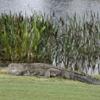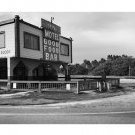
Roger Pellett
-
Posts
4,519 -
Joined
-
Last visited
Reputation Activity
-
 Roger Pellett got a reaction from Canute in Mogami 1944 by Azzoun - FINISHED - Tamiya - 1/350 - PLASTIC - IJN heavy cruiser
Roger Pellett got a reaction from Canute in Mogami 1944 by Azzoun - FINISHED - Tamiya - 1/350 - PLASTIC - IJN heavy cruiser
I keep a tube of Duco cement on my workbench. I use it for temporary glue joints such as the brass/plywood sandwiches that I make for ripping brass strips on my Byrnes Saw. The cement allows the plywood to be peeled away from the brass strip after sawing.
I buy mine at our local Ace Hardware. A tube costs less than $5.00.
Roger
-
 Roger Pellett got a reaction from mtaylor in Mogami 1944 by Azzoun - FINISHED - Tamiya - 1/350 - PLASTIC - IJN heavy cruiser
Roger Pellett got a reaction from mtaylor in Mogami 1944 by Azzoun - FINISHED - Tamiya - 1/350 - PLASTIC - IJN heavy cruiser
I keep a tube of Duco cement on my workbench. I use it for temporary glue joints such as the brass/plywood sandwiches that I make for ripping brass strips on my Byrnes Saw. The cement allows the plywood to be peeled away from the brass strip after sawing.
I buy mine at our local Ace Hardware. A tube costs less than $5.00.
Roger
-
 Roger Pellett got a reaction from mtaylor in Germania Nova 1911 by KeithAug - FINISHED - Scale 1:36 - replica of schooner Germania 1908
Roger Pellett got a reaction from mtaylor in Germania Nova 1911 by KeithAug - FINISHED - Scale 1:36 - replica of schooner Germania 1908
A nice pond yacht, and. I’m sure that she’ll love it.
Roger
-
 Roger Pellett reacted to Azzoun in Mogami 1944 by Azzoun - FINISHED - Tamiya - 1/350 - PLASTIC - IJN heavy cruiser
Roger Pellett reacted to Azzoun in Mogami 1944 by Azzoun - FINISHED - Tamiya - 1/350 - PLASTIC - IJN heavy cruiser
I'm always amused how you try to sit down to do what you think is a small isolated project for your main build, like building a motor launch only to realize it needs to be integrated sooner than you think. Last night, I said, "Self, we'll need these eventually, let's just build a motorlaunch." But as I scoured the details and dug into it, considering all the fine detail that the photo etch kit provides, there's no way that I can think to safely handle this part once its completed. You can see an example below of how small the propellor and rudder is in the sheet. Therefore, I decided to build out the underside with the stands, prop and rudder, then glue it to the main project and build off the ship all of the topside details. From a painting perspective, the initial coat of the launch will be the same as the rest of the ship and then I'll still have access to detail paint the other parts. Below are pictures the overall instructions and as always, love to show the comparison of value that the photo etch offers compared to the stock part, which is shown complete as the kit alone intended. This is how far 2 hours got me between planning and executing on one motorlaunch. As you can see in the instructions, there are several more parts to be added. I need to figure out a good material to coat the grating once it's in place, maybe 00 silkspan soaked in diluted pva. Added an overview of the Mogami status with most structures only dry fitted to the painted deck. Thoughts?
-
 Roger Pellett got a reaction from KeithAug in Germania Nova 1911 by KeithAug - FINISHED - Scale 1:36 - replica of schooner Germania 1908
Roger Pellett got a reaction from KeithAug in Germania Nova 1911 by KeithAug - FINISHED - Scale 1:36 - replica of schooner Germania 1908
A nice pond yacht, and. I’m sure that she’ll love it.
Roger
-
 Roger Pellett reacted to KeithAug in Germania Nova 1911 by KeithAug - FINISHED - Scale 1:36 - replica of schooner Germania 1908
Roger Pellett reacted to KeithAug in Germania Nova 1911 by KeithAug - FINISHED - Scale 1:36 - replica of schooner Germania 1908
Thank you Pat, Mark and Andy.
You may recall that about a month ago I decided to do a parallel build of a pond yacht so here it is.
The starting point was an old hull that had been collecting dust in the garage for 35 years plus. My original plan was to mount a mast and hack some sails out of a bit of cloth and give it to the granddaughter (Bean) as a stocking present.
But I looked at it and thought the deck might be improved a little. So I got some 1/4 inch thick spruce and glued a sheet of black card to one side.
I then slit off deck planks with the pre attached caulking.
The planks were then glued to the hull and the edges were planed to match the hull profile.
I then started to think maybe i need to elaborate on some of the other features. So the yacht acquired a deckhouse, brass fittings etc. Bean loves Maisie the dog so she had to go on board.
And the yacht needed an owner "Captain Bean". Hopefully Captain bean will be a proud owner and therefore the yacht needs a display stand.
By this stage I was starting to worry it my disappear over the horizon on its first outing so it got a rescue line.
Now it just needs wrapping and sending to Santa.
-
 Roger Pellett got a reaction from Canute in Adding to my resource library
Roger Pellett got a reaction from Canute in Adding to my resource library
You can’t go wrong with a full set of Chapelle’s books. Like Jaager and Dr PR posted you have very nice editions of the two that you bought. I also particularly like his American Small Sailing Craft. My library has grown to well over 100 books collected during my adult life. I find books dealing with ship history more useful over time than “how to build ship model” books, as I try to develop my own model building techniques that fit my personal skills and interests.
Roger
-
 Roger Pellett got a reaction from mtaylor in Stays on launch masts
Roger Pellett got a reaction from mtaylor in Stays on launch masts
The Longboat rig shown in the drawing in May’s book does not have backstays.
In 2018 we stayed in St. Ives in Cornwall while touring the UK. There were two lug rigged boats in the harbor that apparently sailed on a regular schedule with passengers. Every afternoon they would sail into the harbor which required several tacks. While the rig may be called a dipping lug, each tack involved completely dropping the sail and resetting it. In that case the sail could always be set on the lee side of the stay.
Furthermore, Bligh was making a long passage, not tacking into a small harbor every day. He could set his sails anticipating that he could remain on the same tack for quite a while.
What I am saying is that stays could be rigged as he saw fit without being concerned about fouling the sails.
Roger
-
 Roger Pellett got a reaction from mtaylor in Stays on launch masts
Roger Pellett got a reaction from mtaylor in Stays on launch masts
The Medway Longboat is of course much different from the boat that you and Craig are discussing as she is sloop rigged. Furthermore, I wonder if her rigging has been tampered with as is the case with many of these old models. I based my Longboat model on the drawing in May’s book. The rigging shown is particularly interesting and workable compared to some. Features on the Medway model.
Paintings and drawings of two masted lug rigged boats in hid book (see cover painting) show masts further apart than sketch above. Rig is also a ketch with mainsail forward. Mays also raises the possibility that these two masted rigs might have employed sprit sails.
Roger
-
 Roger Pellett got a reaction from Harvey Golden in Adding to my resource library
Roger Pellett got a reaction from Harvey Golden in Adding to my resource library
You can’t go wrong with a full set of Chapelle’s books. Like Jaager and Dr PR posted you have very nice editions of the two that you bought. I also particularly like his American Small Sailing Craft. My library has grown to well over 100 books collected during my adult life. I find books dealing with ship history more useful over time than “how to build ship model” books, as I try to develop my own model building techniques that fit my personal skills and interests.
Roger
-
 Roger Pellett got a reaction from allanyed in Stays on launch masts
Roger Pellett got a reaction from allanyed in Stays on launch masts
The Longboat rig shown in the drawing in May’s book does not have backstays.
In 2018 we stayed in St. Ives in Cornwall while touring the UK. There were two lug rigged boats in the harbor that apparently sailed on a regular schedule with passengers. Every afternoon they would sail into the harbor which required several tacks. While the rig may be called a dipping lug, each tack involved completely dropping the sail and resetting it. In that case the sail could always be set on the lee side of the stay.
Furthermore, Bligh was making a long passage, not tacking into a small harbor every day. He could set his sails anticipating that he could remain on the same tack for quite a while.
What I am saying is that stays could be rigged as he saw fit without being concerned about fouling the sails.
Roger
-
 Roger Pellett reacted to allanyed in Stays on launch masts
Roger Pellett reacted to allanyed in Stays on launch masts
Hi Roger,
No argument from me on that at all. That said, the lines such as stays and shrouds may still be valid. In addition I have played with the rig holding up the yard as alternative to the yard having a parrel and halyard reeving over a sheave within the mast. I have drawn both versions but not sure which was most likely used in this case. I am good with either choice unless if I can a find more definitive information. Lavery mentions that the shrouds were for stresses from both the sides and aft on page 227 of The Arming and Fitting of English Ships of War and "forestays braced the mast against pressures from forward on page 228." He makes no mention of backstays, so that question that I had seems to be answered.
This may very well have been the case but as the launch was single masted when built, then modified during the Bounty voyage to the South Pacific, it has not been possible to find if the masts were farther apart or not. I show it about 6 inches aft of midships. The basis I used was a two masted cutter drawing ZAZ7022 of 1786. The aft mast is just about dead center along her length. Note that in this plan the forward mast is only about 10% of her overall length aft of the bow where as the launch original mast was 18% of the overall length aft of the bow. I have no idea if this played a factor in locating the aft mast. Also Lavery shows a photo on page 217 where the masts are separated by only two thwarts between the two that support the masts as I have shown. I realize this is a cutter in his photo, but the spacing principals may still apply. In any case the below is what I have come up with for now.
Again, any definitive information to the contrary on any of the above is MOST welcome.
Thanks for everyone's input, it is greatly appreciated.
Allan
-
 Roger Pellett reacted to iMustBeCrazy in Stays on launch masts
Roger Pellett reacted to iMustBeCrazy in Stays on launch masts
Allan, Bligh wrote "The Size of the Boat was 23 feet from Stem to Stern and Rowed Six Oars" in a letter to Banks (fact 8). I'm fairly happy that the drawing in Bligh's books (RMG ZAZ7848) is a good representation of the Bounty Launch and that ZAZ7361 is an evolution of that based on Bligh's experience. But I could be wrong.
She certainly is Ollie. (Laurel and Hardy).
Me too!
They show a Main and Mizzen, a common rig on boats, but Bligh makes the following notes in his log:
1/ It was about 8 o’clock at Night when I bore away under a reefed Lug foresail
2/ under close reefs Fore Sl. & Main Sail
So the Launch had Main and Fore masts with a lug sail on the fore and probably (but not certainly) the main.
-
 Roger Pellett reacted to Jaager in Adding to my resource library
Roger Pellett reacted to Jaager in Adding to my resource library
"The History of the American Sailing Navy" H.I.C.
As tempting as it is to use the plans directly from the books, better results can be had by using copies of the originals. They are available from The S.I. ships' plans department. The cost is reasonable. Use the books as a catalog.
There are too many degrees of freedom with a bait that is that general. Isolate a specialty segment and ask about that. The more tightly focused is the subject area, the more useful will be any replies.
A popularity contest will give direction if your object is to build a huge library. That ambition is better achieved if you are your sole financial manager.
-
 Roger Pellett got a reaction from Canute in Christmas Ideas
Roger Pellett got a reaction from Canute in Christmas Ideas
The original “Split Granado” was built by South African builder Robert Lichtley, and a series of articles detailing its construction were published in early issues of the British magazine Model Shipwright. I think, late 1970’s. Old Model Shipwright issues can often be found on EBay and in used book dealer inventories. If you can pin down and buy the issues that you need you will have a better set of instructions than you will find in any model kit.
I believe that Lichtley built a fully framed model, added planking, and actually sawed it in half.
Roger
-
 Roger Pellett got a reaction from bruce d in Dremel 4 Inch Table Saw Adventures, Modeling Tools
Roger Pellett got a reaction from bruce d in Dremel 4 Inch Table Saw Adventures, Modeling Tools
It sounds to me like your saw needs a tune up. The rip fence must be parallel to the blade. Actually, the Byrnes saw fence provides a slight relief behind the blade but that’s a detail you can ignore. Check the alignment using the crosscut groove in the table top as a datum. If you have access to a dial indicator clamp it to your miter gage, and clamp the rip fence down tight. When the indicator tip touches the fence set it to 0. Slide it along the fence and adjust the fence alignment until the gage doesn’t deviate from 0. If you don’t have a dial indicator you can do the same thing by clamping a block of wood to your miter gage that touches the fence and then adjusting the fence until the miter gage slides back and forth while still touching the fence. A feeler gage can help you to make sure that the block is touching. Even a Byrnes saw will not cut with a misaligned fence.
Roger
-
 Roger Pellett got a reaction from Canute in Dremel 4 Inch Table Saw Adventures, Modeling Tools
Roger Pellett got a reaction from Canute in Dremel 4 Inch Table Saw Adventures, Modeling Tools
It sounds to me like your saw needs a tune up. The rip fence must be parallel to the blade. Actually, the Byrnes saw fence provides a slight relief behind the blade but that’s a detail you can ignore. Check the alignment using the crosscut groove in the table top as a datum. If you have access to a dial indicator clamp it to your miter gage, and clamp the rip fence down tight. When the indicator tip touches the fence set it to 0. Slide it along the fence and adjust the fence alignment until the gage doesn’t deviate from 0. If you don’t have a dial indicator you can do the same thing by clamping a block of wood to your miter gage that touches the fence and then adjusting the fence until the miter gage slides back and forth while still touching the fence. A feeler gage can help you to make sure that the block is touching. Even a Byrnes saw will not cut with a misaligned fence.
Roger
-
 Roger Pellett got a reaction from mtaylor in Stays on launch masts
Roger Pellett got a reaction from mtaylor in Stays on launch masts
How about no stays? With shrouds led slightly aft they might have been unnecessary.
Roger
-
 Roger Pellett got a reaction from mtaylor in Christmas Ideas
Roger Pellett got a reaction from mtaylor in Christmas Ideas
The original “Split Granado” was built by South African builder Robert Lichtley, and a series of articles detailing its construction were published in early issues of the British magazine Model Shipwright. I think, late 1970’s. Old Model Shipwright issues can often be found on EBay and in used book dealer inventories. If you can pin down and buy the issues that you need you will have a better set of instructions than you will find in any model kit.
I believe that Lichtley built a fully framed model, added planking, and actually sawed it in half.
Roger
-
 Roger Pellett got a reaction from mtaylor in Dremel 4 Inch Table Saw Adventures, Modeling Tools
Roger Pellett got a reaction from mtaylor in Dremel 4 Inch Table Saw Adventures, Modeling Tools
It sounds to me like your saw needs a tune up. The rip fence must be parallel to the blade. Actually, the Byrnes saw fence provides a slight relief behind the blade but that’s a detail you can ignore. Check the alignment using the crosscut groove in the table top as a datum. If you have access to a dial indicator clamp it to your miter gage, and clamp the rip fence down tight. When the indicator tip touches the fence set it to 0. Slide it along the fence and adjust the fence alignment until the gage doesn’t deviate from 0. If you don’t have a dial indicator you can do the same thing by clamping a block of wood to your miter gage that touches the fence and then adjusting the fence until the miter gage slides back and forth while still touching the fence. A feeler gage can help you to make sure that the block is touching. Even a Byrnes saw will not cut with a misaligned fence.
Roger
-
 Roger Pellett reacted to RGL in IJN Heian Maru by RGL - FINISHED - Hasewaga - 1/350 - PLASTIC - Sub depot ship
Roger Pellett reacted to RGL in IJN Heian Maru by RGL - FINISHED - Hasewaga - 1/350 - PLASTIC - Sub depot ship
Degaussing cable added (not on the kit but was added in 1943)
-
 Roger Pellett got a reaction from botra288 in Greetings from the Holy Land
Roger Pellett got a reaction from botra288 in Greetings from the Holy Land
Welcome to MSW Botha,
During my business career, I made 7 trips to Israel. The company that I worked for built the high pressure steam and feedwater piping for the power station at Askelon. We also provided some piping for the station at Caesareria. All of this work was engineered and procured by Israel Electric’s Northern Headquarters at Haifa. Haifa is a beautiful city and my favorite in Israel.
The best advice that I can give is to pick a subject and “make some sawdust.” Most of us learn best by doing.
Roger
-
 Roger Pellett got a reaction from VTHokiEE in Christmas Ideas
Roger Pellett got a reaction from VTHokiEE in Christmas Ideas
The original “Split Granado” was built by South African builder Robert Lichtley, and a series of articles detailing its construction were published in early issues of the British magazine Model Shipwright. I think, late 1970’s. Old Model Shipwright issues can often be found on EBay and in used book dealer inventories. If you can pin down and buy the issues that you need you will have a better set of instructions than you will find in any model kit.
I believe that Lichtley built a fully framed model, added planking, and actually sawed it in half.
Roger
-
 Roger Pellett reacted to wefalck in Cleaning and Priming metal
Roger Pellett reacted to wefalck in Cleaning and Priming metal
If the flux is just citric acid, chances are that you have it already in your kitchen as de-scaler for coffee-machines and the likes. Over here in Europe we buy it in 500 g boxes in powder form in supermarkets. Just dissolve the crystals in distilled water (preferably), as the carbonate-hardness of the tap-water would consume some of the acid.
-
 Roger Pellett got a reaction from Canute in Cleaning and Priming metal
Roger Pellett got a reaction from Canute in Cleaning and Priming metal
For the extensive brass fabrication that I am doing for my current project I am using Bakers Fluid. This is a water thin clear liquid. I apply it with small paint brush. It apparently has very low surface tension as it flows into tight joints. Solder seems to follow it.
I have also learned to “match the solder to the application.” I have three diameters of solder- .015in, 1/32in, and 1/8in. For most work, 1/32in seems ideal. It does it’s job without dropping a big blob that must be cleaned up later. I will be moving on shortly to 150 or so tiny ring bolts for wooden hatches. For these, I intend to use the .015in. There are also some applications where solder is built up and then shaped to build a contour. For this the 1/8in diameter works well.
Likewise, I have several soldering irons with different tip size. The idea is to use the smallest tip that will heat the joint. A tip that is too large can deposit a big blob that will require extensive cleanup or can ruin the work.
Roger







